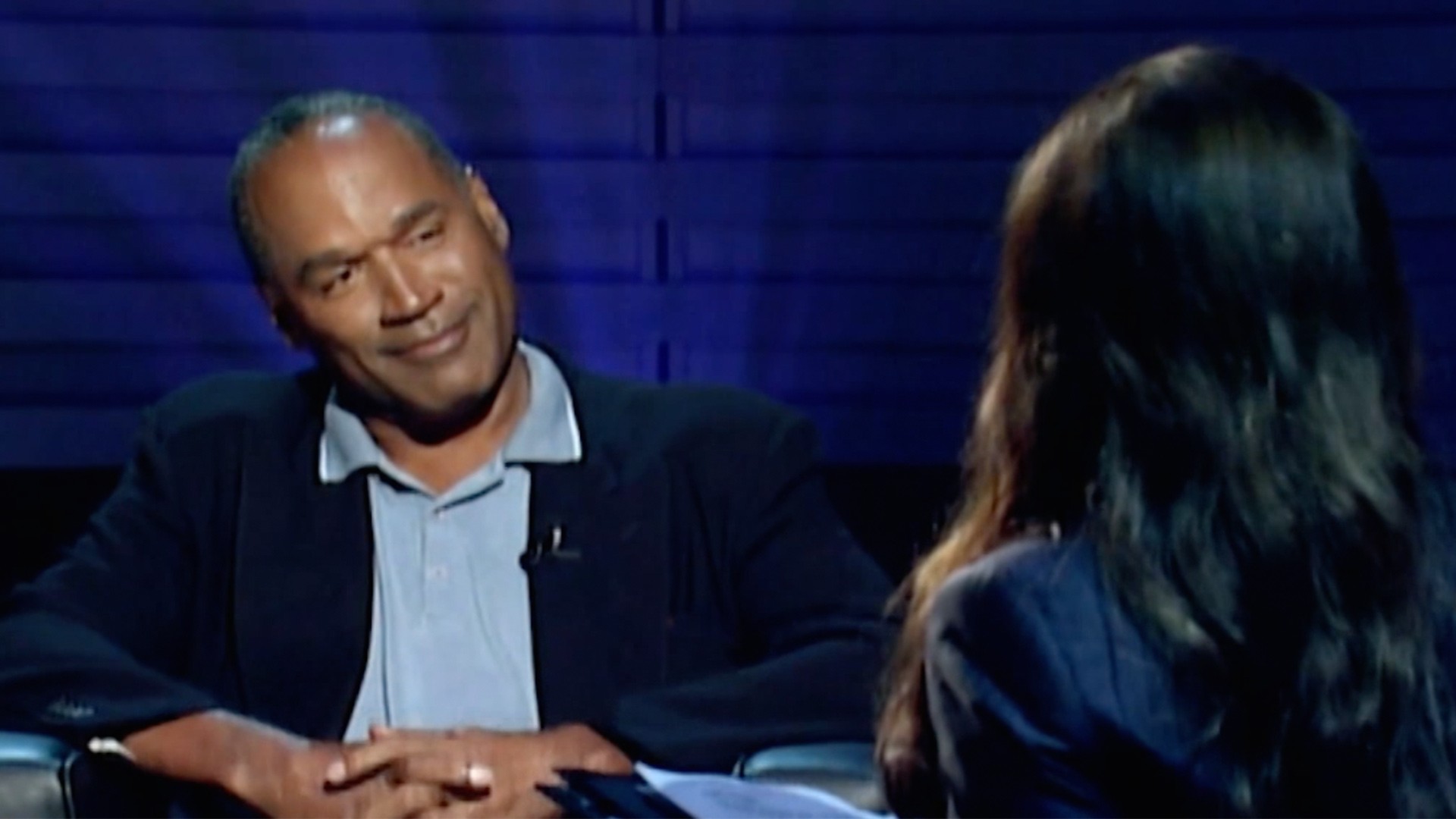Photo by Ray Mickshaw/FX
Just about every episode of The Assassination of Gianni Versace has provided a different possible answer to the question of why? Did Andrew Cunanan murder five men because he was a sociopath, or because his heart was broken? Was he lashing out because he’d failed at life, or did he see his killing spree as a way of attaining immortality? (If so, unfortunately, he was correct.) Was he a victim of widespread homophobia, or the living embodiment of it? Should we blame his fragile, mentally ill mother or, as last night’s penultimate episode, “Creator/Destroyer,” suggests, his defrauder dad?We've heard so much about Modesto “Pete” Cunanan in the season’s first seven episodes that his appearance this week qualifies as a reveal. Andrew mentions this mythical figure in the crucial, if also fantastical, scene from the pilot where he and Gianni have a heart-to-heart at the San Francisco Opera. By then, a few years after we leave him in “Creator/Destroyer,” he’s perfected his story about the pineapple plantations and the boyfriend and Imelda Marcos. Now we know that Andrew learned to lie so shamelessly from his father, whose entire life was a con.Pete grew up in the village of Baliuag, in the Philippines. As we hear him mention in his Merrill Lynch interview, he began his career in the US Navy. In 1961, he met Andrew’s mom, MaryAnn. Although he was a short, squat man 11 years her senior, she fell for him immediately. As she recalls to Maureen Orth in Vulgar Favors, “He was dressed in a white tuxedo, and I thought he looked like a Filipino Errol Flynn.” By the time they married, the same year they met, MaryAnn was six months pregnant. The kids we see in the episode are all ostensibly the products of that union—although Pete, who was constantly paranoid that his wife was cheating on him, maintained that their blonde, blue-eyed elder daughter, Elena, wasn’t his.From here, the show’s timeline gets messy. It’s true that the Cunanans bought their first home, in the working-class San Diego suburb National City, for around $12,000, or roughly $90k today. Andrew was born two years later, in 1969. But when he was four, they moved to a fancier house in middle-class Bonita. Paid for with an inheritance MaryAnn received after her father died, the new place would have cost more than $550,000 in 2018.The mini-mansion they bought when Andrew was a teenager was a third, even more expensive, home—the one we see them move into at the beginning of “Creator/Destroyer,” except that Versace suggests that he was just a precocious ten- or 11-year-old at the time. (Shout out to Evelyn Waugh’s Brideshead Revisited, a classic novel of wealth, war, and homoeroticism that Andrew started obsessing over after he caught the equally beloved 1981 PBS miniseries.)His dad did, in fact, give him the master bedroom and buy him a sports car before he was old enough to drive it. There’s a peculiar, uncharacteristically context-free passage in Vulgar Favors where Orth notes, “People have wondered whether Pete and Andrew could possibly have had an intimate relationship while Andrew was growing up,” then reports that, “Pete is not upset by the question. He coolly takes a drag on his cigarette, and says no.” And that’s the end of that.In any case, it was MaryAnn’s idea to send Andrew to La Jolla’s exclusive Bishop’s School. Although he hid his sexuality from his family, at school he cultivated a gregarious, pretentious, preppy, and extremely effeminate persona inspired by the aristocratic, queer Brideshead character Sebastian Flyte. He dated older men who showered him with gifts—including one named Antoine, who supposedly paid for that insane red leather suit Andrew wears to the house party. (That Antoine was a married closet-case is pure speculation on the show’s part.) The details about his yearbook, in which classmates voted him “Most Likely to Be Remembered” and he captioned his senior photo "Après moi, le déluge" ("After me, the flood"), an ominous quote attributed to either King Louis XV or his mistress, Madame de Pompadour, are accurate.Meanwhile, Pete had retired from the Navy in 1977, earned his bachelor’s degree and MBA, and entered a stockbroker training program at Merrill Lynch. He left two years later, going on to work at five other firms between 1981 and 1988. One former employer told Orth that Pete had stolen money from clients, including at least one nonagenarian like the elderly woman we see him talking to on the phone, at many of those companies. “There is no disclosable disciplinary action with the [National Association of Securities Dealers] on record,” Orth writes, “but Pete was let go more than once.” There was never any dramatic FBI chase, but Pete did secretly sell the Cunanan home and flee to the Philippines. MaryAnn spiraled, her kids dropped out of college, and Andrew spent five uncomfortable days in his dad’s homeland. As Versace suggests, he’d bought in to Pete’s lies about their prosperity as much as anyone else. The connection to Gianni Versace’s childhood, in a rare dive into the designer’s history that actually works on the show, is obvious. Versace's mother, Francesca, really did want to be a doctor before yielding to the sexism of the the family’s Southern Italian home city of Calabria and starting a prosperous dressmaking business instead. In her book House of Versace, Deborah Ball writes that Franca had opened her own shop by age 20. That Andrew’s beloved dad bought his son everything he wanted and encouraged him to see himself as special, while Gianni’s beloved mom preached hard work and taught him to sew, is too telling a contrast to ignore.There were other important differences between Cunanan's and Versace's beginnings, of course. The Assassination of Gianni Versace has been taken to task for erasing Andrew's biracial identity. Although she praises Ryan Murphy’s decision to cast Darren Criss, a half-Filipino Glee alum, in the starring role, Slate critic Inkoo Kang points out that, “A few character details here and there suggest Andrew’s racial self-hatred and the prevalence of anti-Asian racism within the gay community, but the relative sparseness of these implications is all the more noteworthy in contrast with the richly developed portrait of the decade’s homophobia.”Last night’s episode goes a long way toward justifying the omission. Murphy and writer Tom Rob Smith aren’t blithely erasing Andrew's Filipino identity so much as depicting the way he denied his Asian-American side because he was ashamed of his father. In an interview with Vulture, Smith said, “It’s interesting that [Andrew] excludes his own racial identity, which is why you don’t get to it until a later part of the episodes, because he lies about it.” Pete’s story, which highlights how he talked his way into the overwhelmingly white world of banking and implies that racism kept him from excelling there, is the story of the role Andrew’s nonwhite heritage played in his life. By the end of the episode, he’s rejected his dad, left the Philippines, and applied for a job with a Filipino drugstore owner whose modest success elicits only condescension from Andrew.So! Next week is the series finale. No telling what can be expected. There isn’t much left to tell about Cunanan's life before the murders, so maybe Versace will flash forward to the period immediately after them, when Andrew was on the run again and Donatella was struggling to carry on her brother’s company as the family mourned. Maybe, like the premiere, it will alternate between that story and the characters’ pasts. Either way, it should be an exciting final chapter of such an elegant, if misunderstood, season.Sign up for our newsletter to get the best of VICE delivered to your inbox daily.Follow Judy Berman on Twitter.
The connection to Gianni Versace’s childhood, in a rare dive into the designer’s history that actually works on the show, is obvious. Versace's mother, Francesca, really did want to be a doctor before yielding to the sexism of the the family’s Southern Italian home city of Calabria and starting a prosperous dressmaking business instead. In her book House of Versace, Deborah Ball writes that Franca had opened her own shop by age 20. That Andrew’s beloved dad bought his son everything he wanted and encouraged him to see himself as special, while Gianni’s beloved mom preached hard work and taught him to sew, is too telling a contrast to ignore.There were other important differences between Cunanan's and Versace's beginnings, of course. The Assassination of Gianni Versace has been taken to task for erasing Andrew's biracial identity. Although she praises Ryan Murphy’s decision to cast Darren Criss, a half-Filipino Glee alum, in the starring role, Slate critic Inkoo Kang points out that, “A few character details here and there suggest Andrew’s racial self-hatred and the prevalence of anti-Asian racism within the gay community, but the relative sparseness of these implications is all the more noteworthy in contrast with the richly developed portrait of the decade’s homophobia.”Last night’s episode goes a long way toward justifying the omission. Murphy and writer Tom Rob Smith aren’t blithely erasing Andrew's Filipino identity so much as depicting the way he denied his Asian-American side because he was ashamed of his father. In an interview with Vulture, Smith said, “It’s interesting that [Andrew] excludes his own racial identity, which is why you don’t get to it until a later part of the episodes, because he lies about it.” Pete’s story, which highlights how he talked his way into the overwhelmingly white world of banking and implies that racism kept him from excelling there, is the story of the role Andrew’s nonwhite heritage played in his life. By the end of the episode, he’s rejected his dad, left the Philippines, and applied for a job with a Filipino drugstore owner whose modest success elicits only condescension from Andrew.So! Next week is the series finale. No telling what can be expected. There isn’t much left to tell about Cunanan's life before the murders, so maybe Versace will flash forward to the period immediately after them, when Andrew was on the run again and Donatella was struggling to carry on her brother’s company as the family mourned. Maybe, like the premiere, it will alternate between that story and the characters’ pasts. Either way, it should be an exciting final chapter of such an elegant, if misunderstood, season.Sign up for our newsletter to get the best of VICE delivered to your inbox daily.Follow Judy Berman on Twitter.
Advertisement
Advertisement
Advertisement

Advertisement
